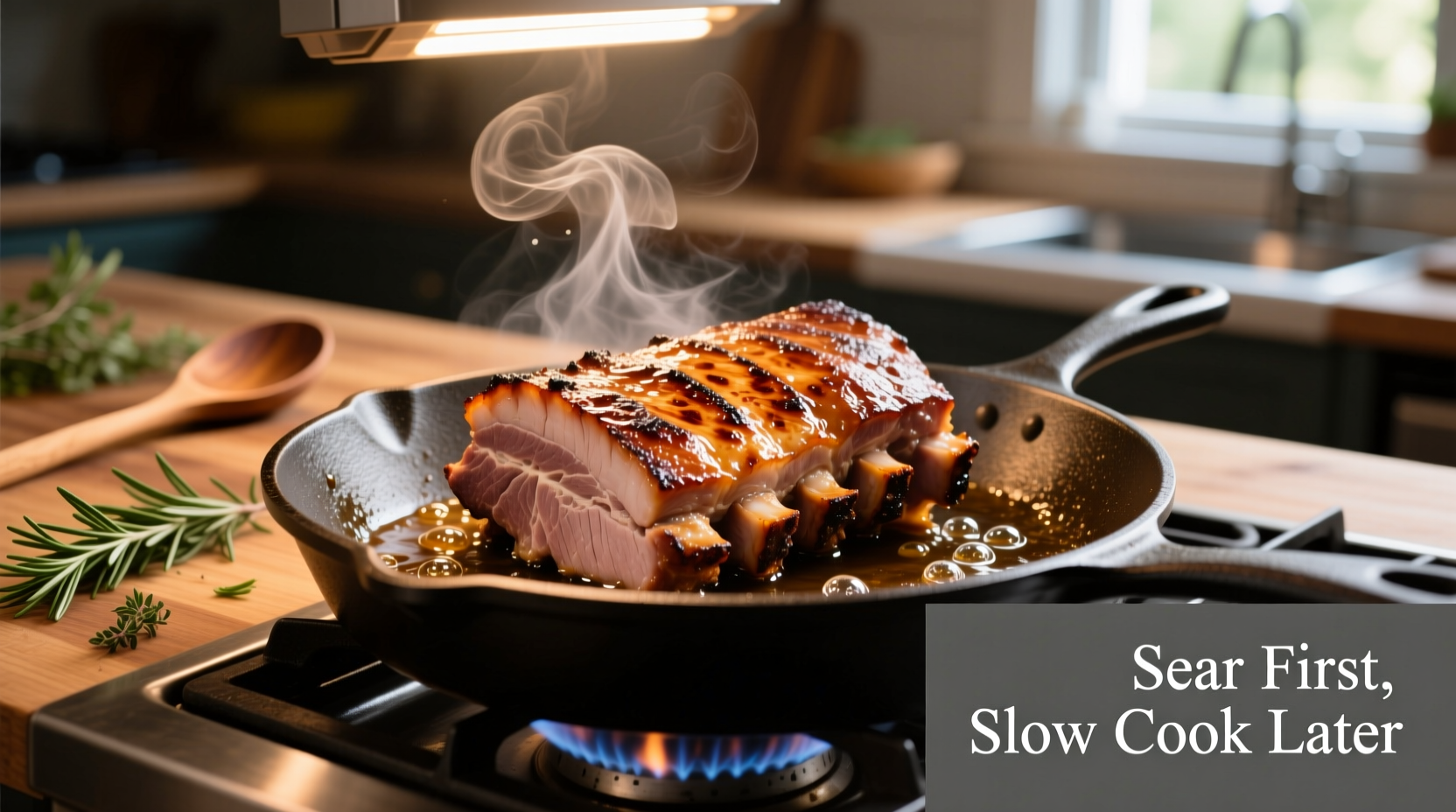Why Slow Cooking Transforms Pork Loin
Unlike tougher cuts that require long cooking to break down connective tissue, pork loin is naturally lean and tender. The slow cooker's gentle heat prevents overcooking while allowing flavors to penetrate evenly. According to USDA food safety guidelines, pork should reach 145°F internal temperature with a 3-minute rest for safe consumption. Slow cooking makes hitting this precise target easier than stovetop or oven methods.
Your Pork Loin Preparation Checklist
Before you begin cooking, proper preparation ensures optimal results:
1. Selecting the Right Cut
Choose a boneless pork loin roast (not tenderloin) between 2-4 pounds. Larger cuts work better in slow cookers as they're less prone to drying out. The National Pork Board confirms that slow cooking preserves moisture in lean cuts when prepared correctly.
2. Essential Pre-Cooking Steps
Skip this at your peril - it makes the difference between bland and brilliant:
- Pat dry thoroughly with paper towels (critical for proper searing)
- Season generously with salt 1 hour before cooking
- Sear all sides in hot oil until golden brown (don't skip this step!)

The Foolproof Slow Cooking Process
Follow these steps for consistently tender pork loin that shreds perfectly:
3. Building Flavor Layers
After searing, create a flavor base in your slow cooker:
- Place sliced onions and garlic in bottom of cooker
- Add 1 cup liquid (chicken broth works best)
- Include acid component like 2 tbsp apple cider vinegar
- Return seared pork loin on top of aromatics
4. Optimal Cooking Settings
| Pork Loin Weight | LOW Setting Time | HIGH Setting Time | Internal Temp Target |
|---|---|---|---|
| 2-3 lbs | 4-5 hours | 2-3 hours | 145°F |
| 3-4 lbs | 5-6 hours | 3-4 hours | 145°F |
| 4+ lbs | 6-7 hours | Not recommended | 145°F |
Source: USDA Food Safety and Inspection Service temperature guidelines
5. Avoiding Common Mistakes
These pitfalls ruin otherwise perfect slow cooker pork loin:
- Overfilling the cooker - never fill beyond ¾ capacity
- Lifting the lid frequently - each peek adds 20+ minutes to cooking time
- Adding dairy early - wait until last 30 minutes to prevent curdling
- Skipping the rest period - crucial for juice redistribution
Serving and Storage Guidelines
Maximize your results with these professional techniques:
Perfect Slicing Technique
Always slice against the grain at a 45-degree angle using a sharp knife. This shortens muscle fibers for maximum tenderness. For meal prep, slice into ¼-inch pieces after cooling slightly.
Safe Storage Practices
Follow FDA food safety recommendations:
- Refrigerate within 2 hours of cooking
- Store in airtight containers for up to 4 days
- Freeze portions for up to 3 months
- Reheat to 165°F internal temperature
Flavor Variations for Every Palate
Customize your slow cooker pork loin with these tested combinations:
Classic Herb Version
Rub with 2 tbsp olive oil, 3 minced garlic cloves, 1 tbsp rosemary, 1 tbsp thyme, salt and pepper before searing.
Asian-Inspired Option
Use 1 cup coconut milk instead of broth with 3 tbsp soy sauce, 2 tbsp honey, and 1-inch grated ginger.
Spicy Southwest Style
Add 1 can diced tomatoes with green chilies, 1 tbsp cumin, and 1 tsp smoked paprika to the cooking liquid.
Troubleshooting Guide
Solve common issues before they ruin your meal:
Dry Pork Loin
Cause: Overcooking or insufficient liquid
Solution: Always use a meat thermometer and maintain at least 1 cup liquid. For already dry pork, shred and mix with 2-3 tbsp cooking liquid.
Undercooked Center
Cause: Inaccurate temperature reading
Solution: Insert thermometer into thickest part, avoiding fat pockets. If undercooked, continue cooking in 30-minute increments.
Soggy Exterior
Cause: Skipping sear step or excessive liquid
Solution: Always sear first. For already cooked pork, finish under broiler for 3-5 minutes to restore texture.
Frequently Asked Questions
Can I cook frozen pork loin in a slow cooker?
No, the USDA Food Safety and Inspection Service recommends against cooking frozen meats in slow cookers. Frozen pork spends too long in the danger zone (40°F-140°F), increasing foodborne illness risk. Always thaw completely in the refrigerator before slow cooking.
Why is my slow cooker pork loin tough?
Pork loin becomes tough when overcooked beyond 145°F internal temperature. Unlike shoulder cuts, loin has minimal connective tissue to break down. Use a digital thermometer and remove at exactly 145°F, followed by a 3-minute rest. Slicing against the grain also prevents toughness.
How do I prevent pork loin from drying out in slow cooker?
- Sear the meat first to lock in juices
- Maintain at least 1 cup liquid in the cooker
- Never exceed 6 hours on LOW setting
- Use a thermometer and remove at 145°F
- Let rest 3 minutes before slicing
Can I add vegetables to cook with pork loin?
Yes, but add them strategically. Root vegetables like potatoes and carrots can go in at the beginning. Softer vegetables like bell peppers and zucchini should be added during the last 2 hours to prevent mushiness. Always place vegetables underneath the pork to protect them from direct heat.











 浙公网安备
33010002000092号
浙公网安备
33010002000092号 浙B2-20120091-4
浙B2-20120091-4